22 Exotic Fruits you need to try in Seychelles
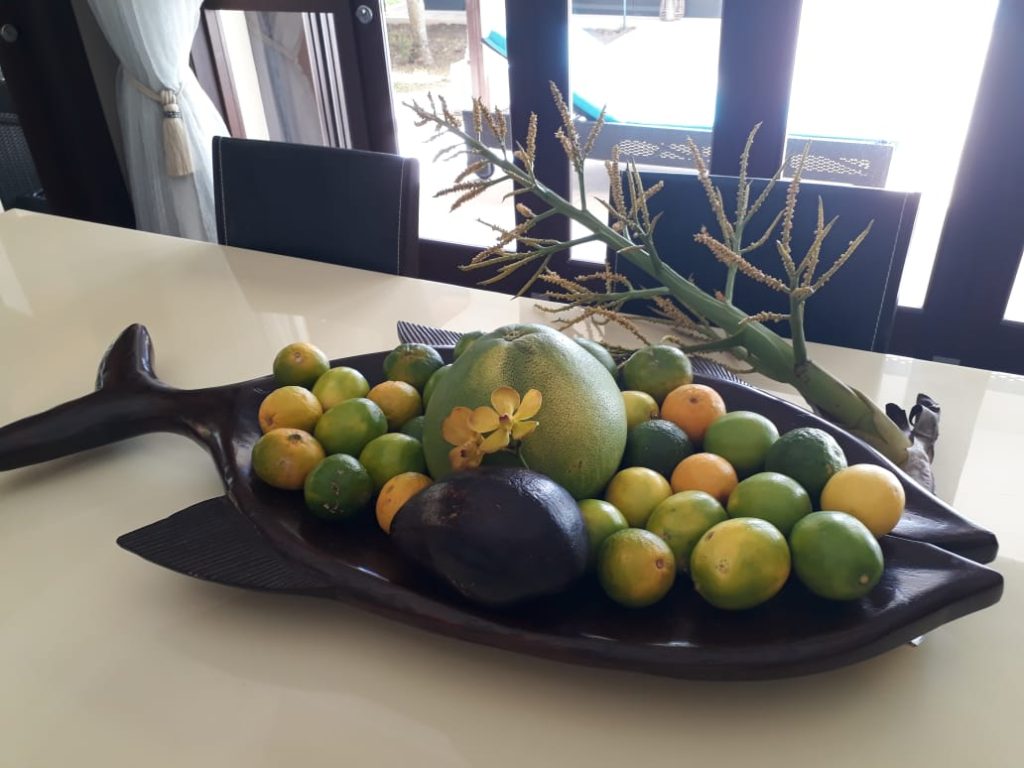

A holiday in Seychelles will likely involve lots of time spent at the beach and exploring the beautiful sights. There’s so much to see and do, including island-hopping, hiking, snorkelling, swimming, visiting art galleries and much more. But apart from the beautiful natural scenery and activities to keep you entertained, Seychelles also has some of the tastiest and exotic fruits. Depending on the time of your visit, you may be able to sample quite a few of these, so be sure to try as many as you can during your holiday.
Let’s start with the most obvious of the exotic fruits. There is no limit to the uses of coconuts. The coconut palm itself has and still is used for a number of things. Its leaves are used for thatching roofs, making hats, brooms, baskets, and so much more. The ‘palm heart’ (‘palmis’ in Creole) is considered a delicacy, and the sap from the palm tree is also used to make toddy (known as ‘baka’ in Creole). The actual coconut is used in many dishes, including cakes and desserts, not to mention that it’s also a tasty snack. The milk from the grated coconut is also widely used in cooking. The water provides a lovely and refreshing drink, and oil made from the coconut is used in cooking as well as in many beauty treatments.
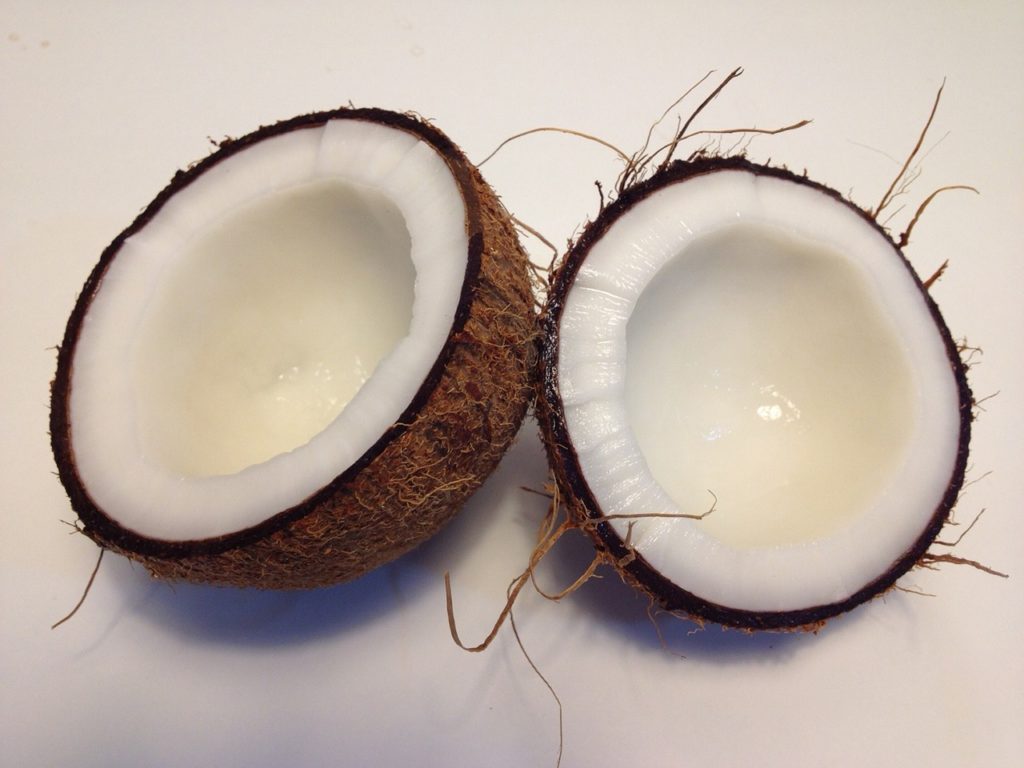
Coconut
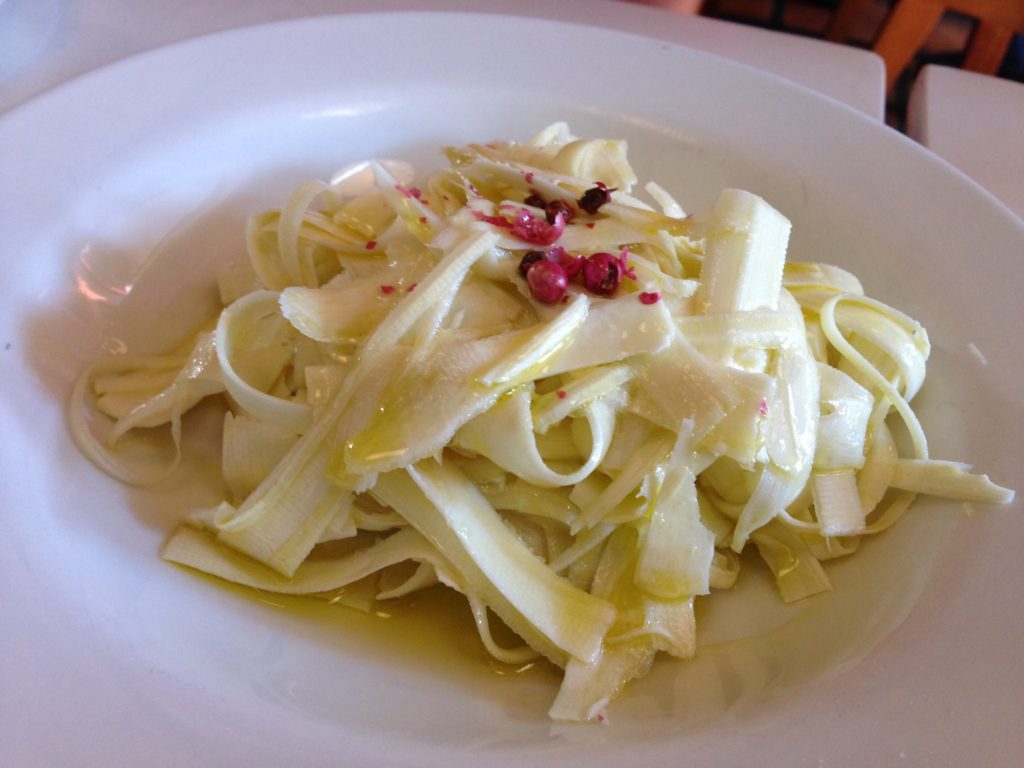
Palm Heart Salad, Nicholas Lundgaard, CC BY-SA 2.0, Flickr
As you can see, the coconut is pretty amazing. But there’s more. Not many people are aware of the ‘coconut apple’ (‘koko zerm’ in Creole). If you get the chance to try this, then you really should. The coconut apple, also known as a ‘coconut pearl’, can be found inside fallen, germinating coconuts. The water inside the fallen coconut forms a spongy mass. This is all in an effort to nourish the new coconut tree. However, it is necessary for the germinating stem to have begun growth to a certain size before the coconut apple is ready to be eaten. Although it has a spongy texture, it is very sweet and juicy. In fact, if I’m honest, I think I prefer to coconut apple to the actual coconut.
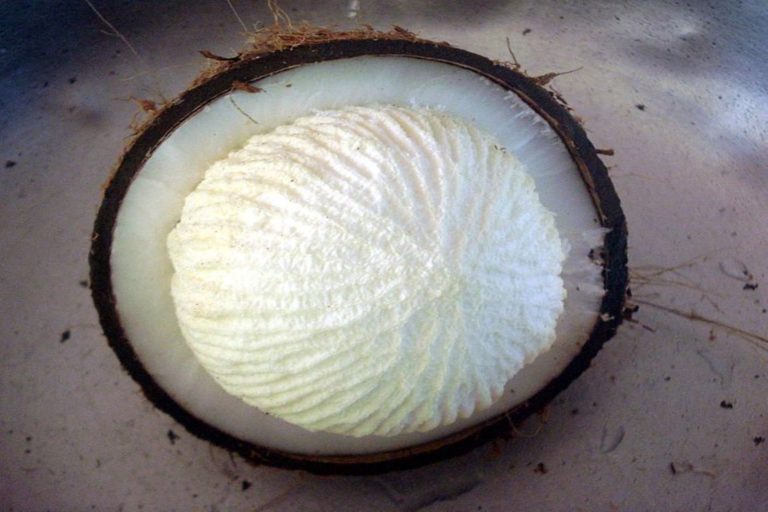
Coconut Pong Inside (Coconut Apple), K.S. Mini, CC BY-SA 3.0, Wikimedia Commons
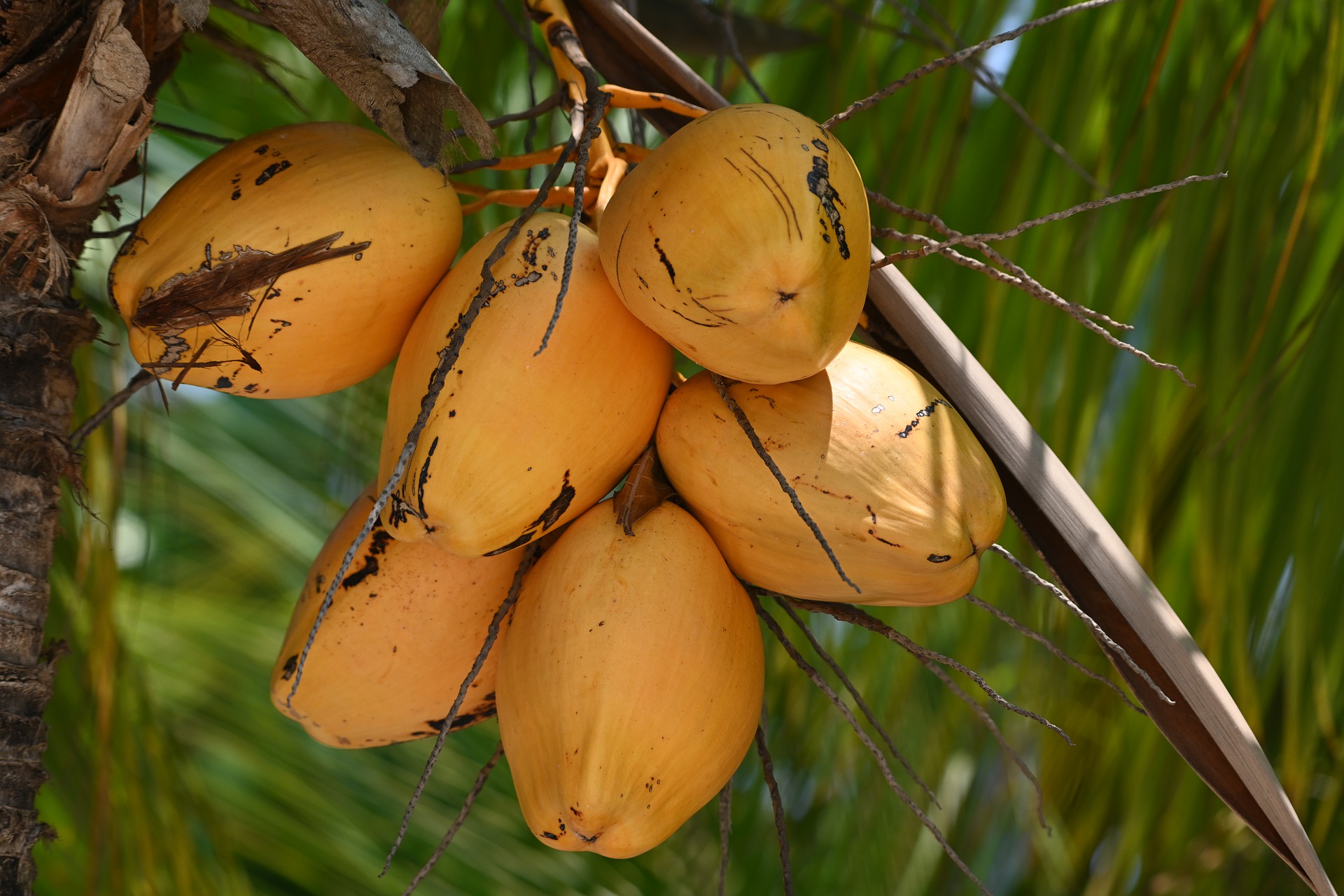
Coco Rouge
The Coco Rouge (Koko Rouz) is an orange coloured coconut often found on sale in fruit stalls around the beaches and in other areas. The water inside has a nutty, refreshing taste to it. The flesh can also be eaten. It is soft and fleshy, kind of jelly-like, and can easily be scraped out with a spoon.
The Coco de Mer is another type of coconut found in Seychelles. This endemic palm is protected and only grows naturally on the islands of Praslin and Curieuse. Poaching and climate change has been a huge risk for these palms and it is currently listed on the International Union for Conservation of Nature’s (IUCN) red list. As such, a new scheme was launched in Seychelles in which Seychellois can apply for permission to plant the palm on their property. All of this is in an effort to preserve this beautiful palm which bears the world’s largest seed.
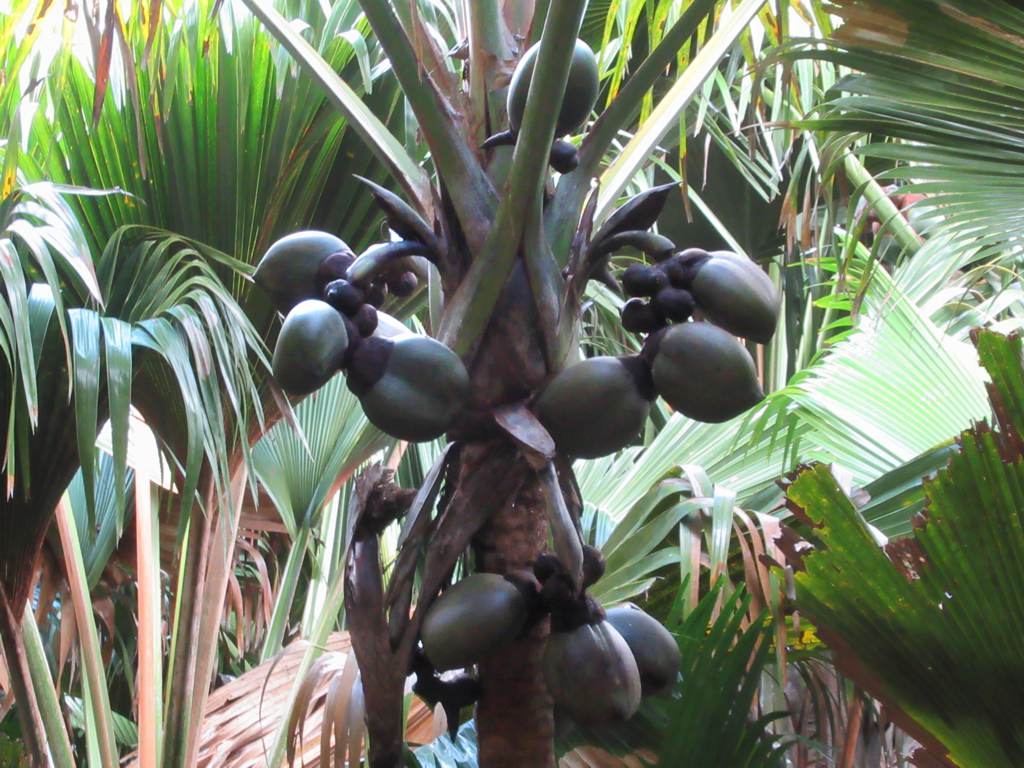
Coco-de-Mer, David Stanley, CC BY 2.0, Flickr
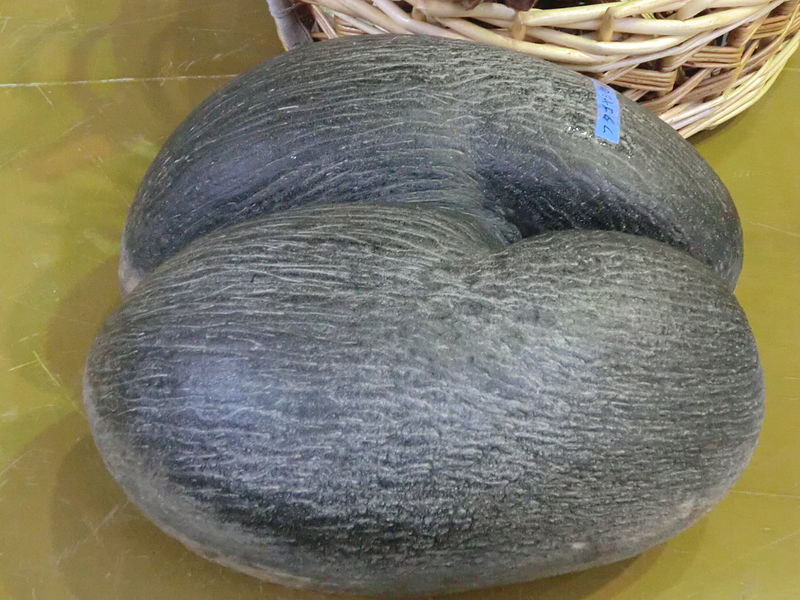
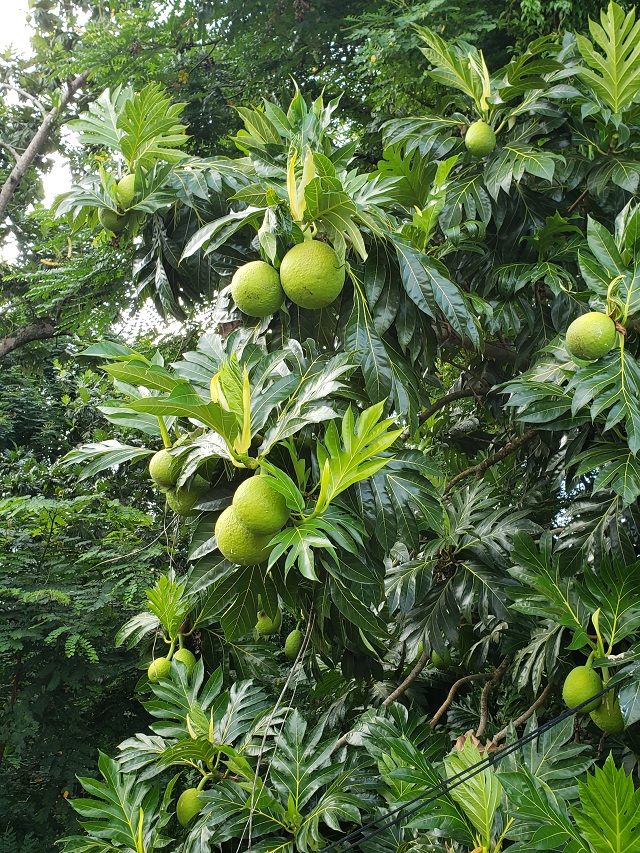
Breadfruit Tree, Salifa Karapetyan, Seychelles News Agency, CC BY 4.0
Seychellois saying about breadfruit –
‘if you eat a breadfruit in Seychelles, then you are bound to return to the islands’
This large, green, starchy fruit can be eaten in many ways including being boiled, fried, steamed, mashed, baked and roasted. I’d have to say that my favourite ways to eat breadfruit is either roasted or cooked in coconut milk. When breadfruit is roasted in coconut husks, the flesh inside can be eaten with butter and it is amazing. It just melts in your mouth. When cooked in coconut milk, it’s called ‘ladob’ and this creamy dessert type dish is out of this world. In fact, this would be on my list of top dishes to try in Seychelles.
‘Zak’ or jackfruit, is related to the breadfruit and slightly similar in appearance on the outside. The inside of the two however are largely different.
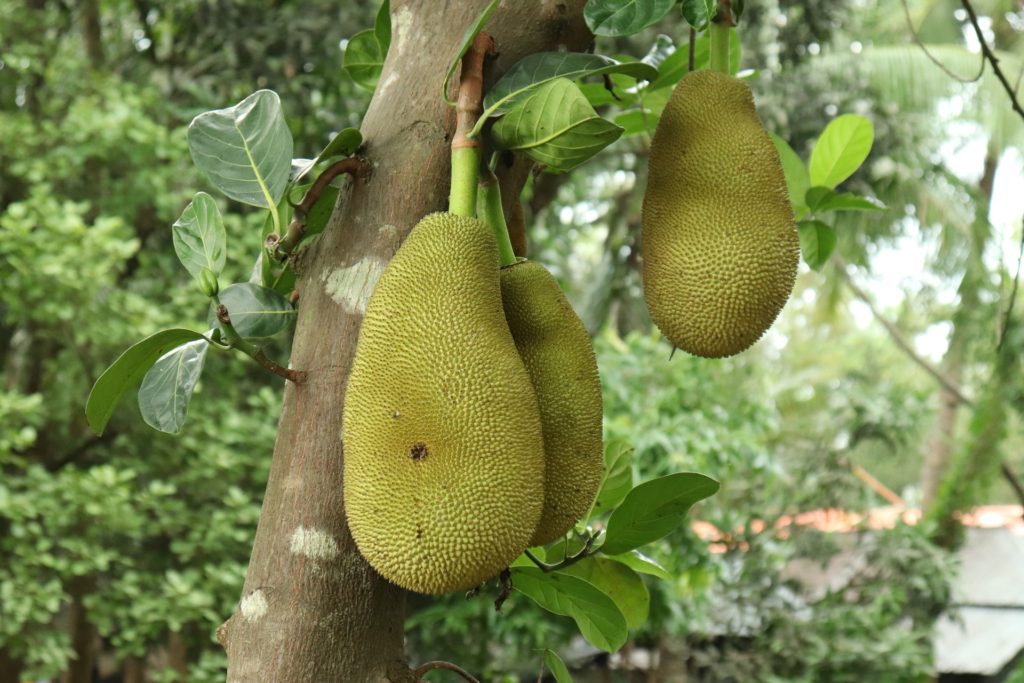
Jackfruit
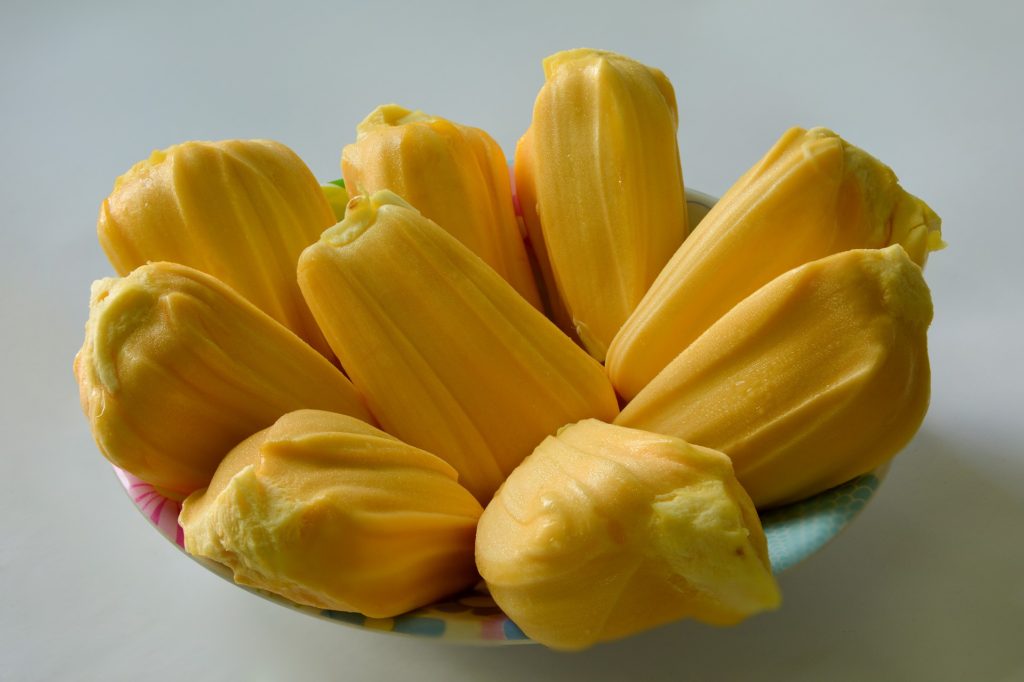
Jackfruit Flesh
The interior of the breadfruit is starchy with a yellowy/white colour, much like potatoes. Jackfruit on the other hand is made up of a many yellow ‘bulbs’ of flesh. This can be eaten as is or cooked. I personally am not a fan as I find the smell quite strong and unpleasant, but others, like my husband, think it’s amazing. By all means, give it a go and see for yourself.
When ripe, this fruit turns into a golden, yellowish colour and is eaten as is. The golden apple is both sweet and sour with a crunchy flesh and spiky stone. When it is still green, it is used mostly to make ‘satini’ or chutney. The apple is grated and tossed in oil, lemon juice, onion and also chili and then served as an accompaniment to the main meal.
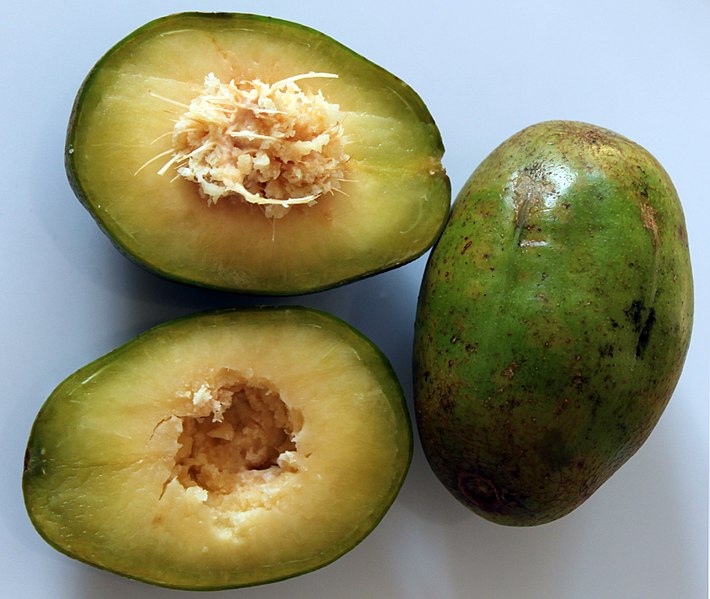
Polynesian Plum (Golden Apple), Anagoria, CC BY 3.0, Wikimedia Commons
The sugar apple is a rounded, knobby, greenish fruit with soft flesh. It’s not called ‘sugar’ apple for nothing. As its name suggests, the fruit’s flesh is lovely and sweet and also slightly grainy. Just be aware that the flesh is in small segments, most of which contain seeds. So you’ll be spitting out a fair bit of seeds as you eat, but it’s so worth it. The sugar apple can be made into smoothies and juices too.
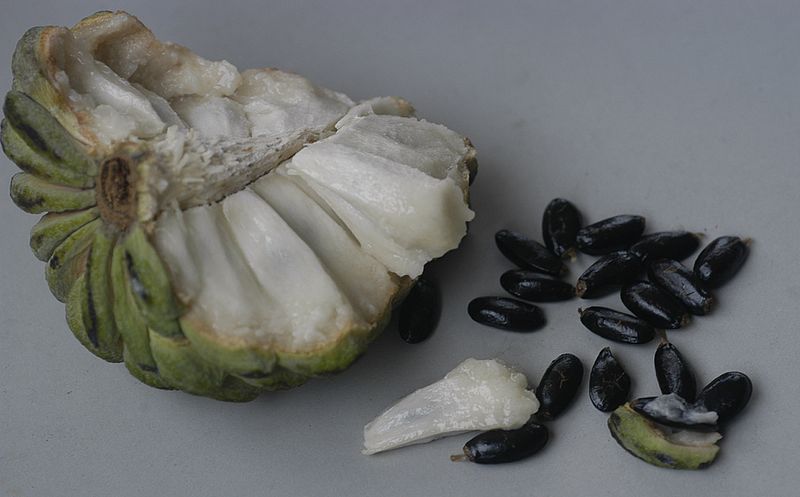
Sugar Apple, CostaPPPR, CC BY-SA 4.0, Wikimedia Commons
Closely related to the sugar apple is the soursop, known as ‘korsol’ in Seychelles. Instead of the knobby rounded shape, the soursop is more oval and the skin prickly. However, the flesh inside is similar to the sugar apple in that it is soft and fleshy with seeds. Like the sugar apple, the soursop can be made into juices or smoothies.
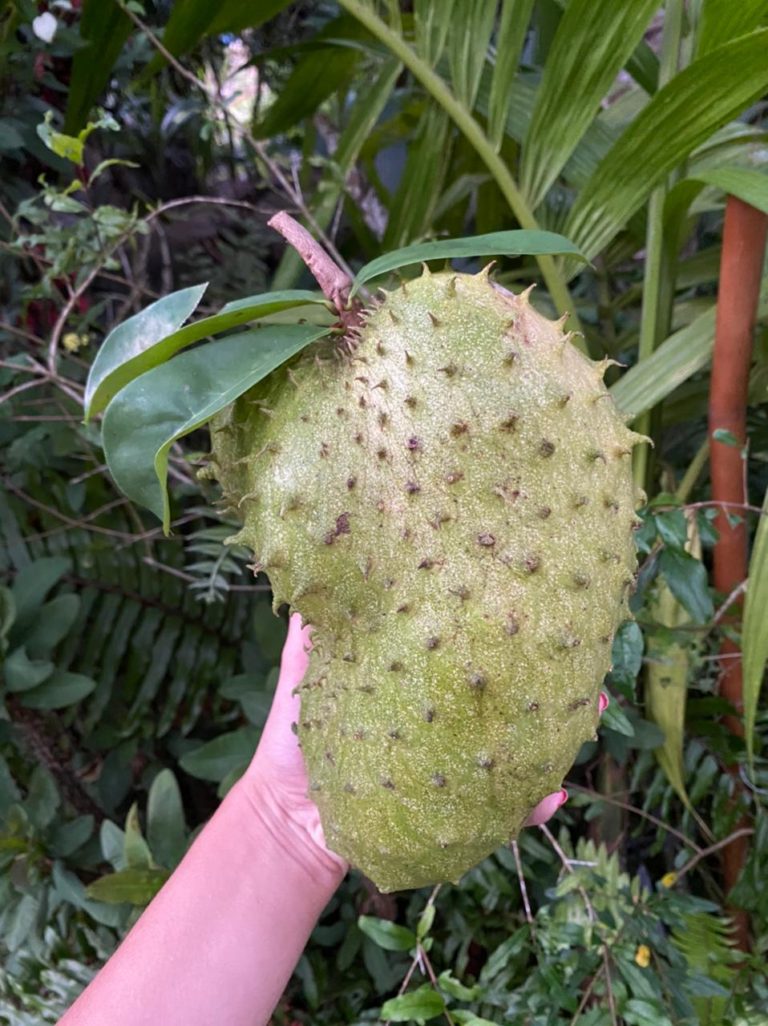
Soursop
The Creole name for the Custard Apple is Ker-d-bef (bull’s-heart) due to its heart-shape. The skin is rough and once ripe, a brownish/red or yellowish colour. The flesh is thick and sweet much like the sugar apple and also has seeds.
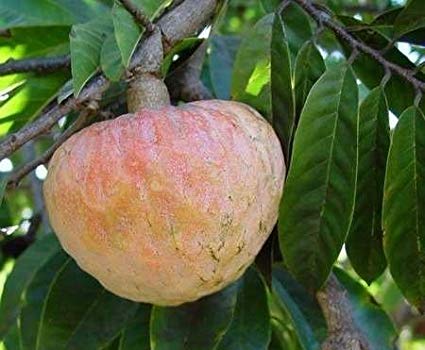
Custard Apple, Vemurione, CC BY-SA 4.0, Wikimedia Commons
This ‘apple’ does not look or taste like your regular apple. The fruit is shaped more like a pear so has more of a bell-shape. The flesh is more comparable to a watermelon due to the liquid-to-flesh ratio. The inner core area has more of a cottony texture. Generally, the redder the colour, the sweeter it is.
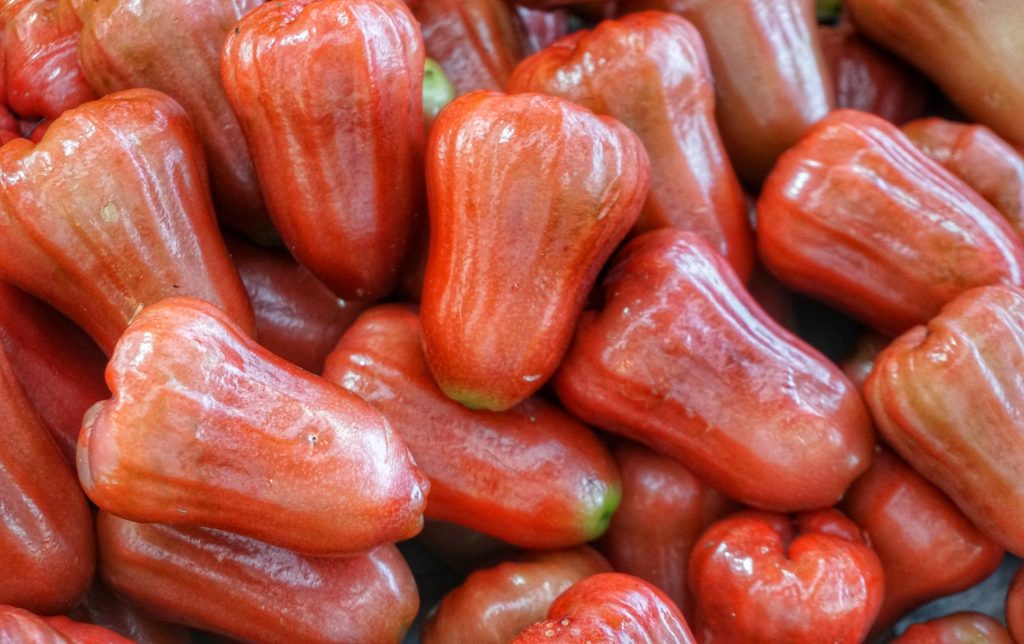
Java Apple
This ‘local apple’ as it is called in Creole, is a red, juicy spongy fruit. The tree itself is believed to be one of the most beautiful of its species due to the magnificent flowers when in bloom. Like the java apple, the Malay apple is washed and eaten as is.
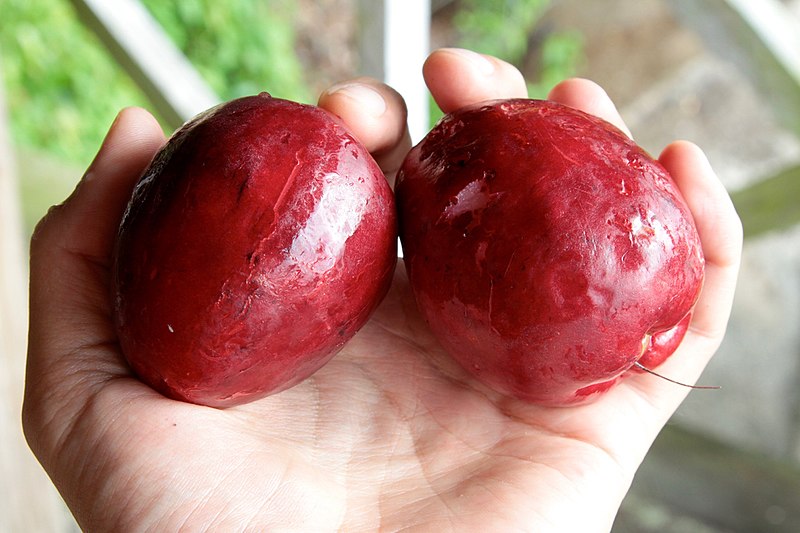
Malay Apple, Dr. Alexey Yakovlev, CC BY-SA 2.0, Flickr
The Seychelles has a variety of types of mango. They can be eaten as is or made into juices and smoothies. They are also used in salads. You should definitely try mango salad, made with mangoes (obviously), onions, lemon and sometimes chili. This is one of my favourites and also makes my list of top foods to recommend.
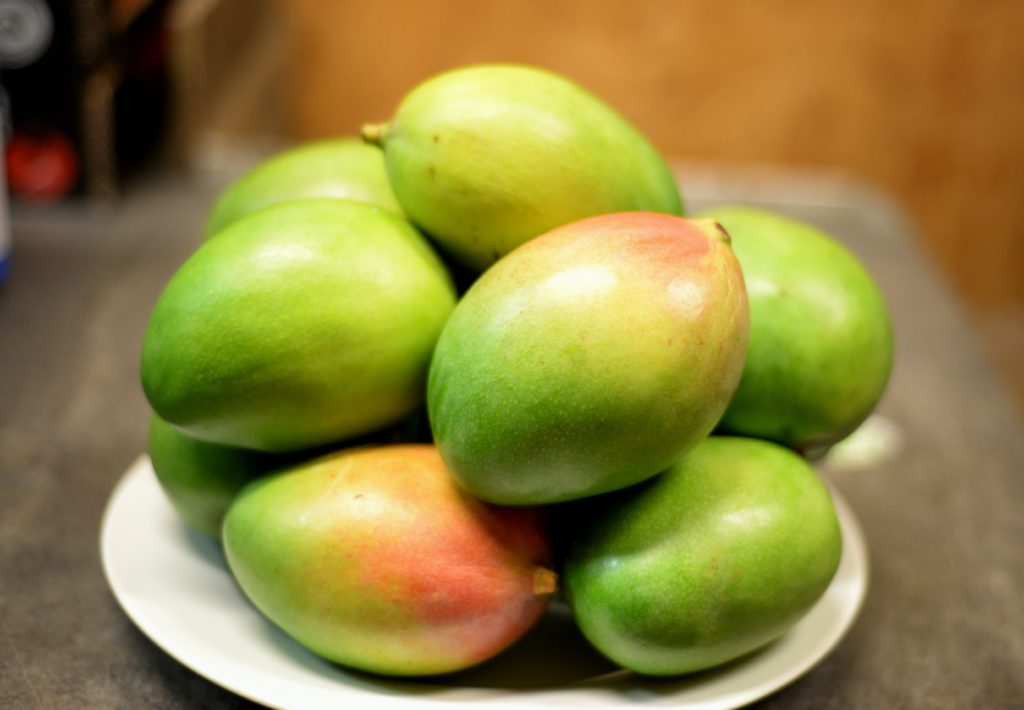
Mangoes
Like many other fruits in Seychelles, papaya can be eaten as a healthy, juicy snack as well as in cooking. Like golden apple, green papayas are grated and tossed in oil to make ‘satini’ (chutney). My grandmother also uses papaya to make soup (with pork), but this is more a Chinese dish than a Creole one. It’s delicious all the same!
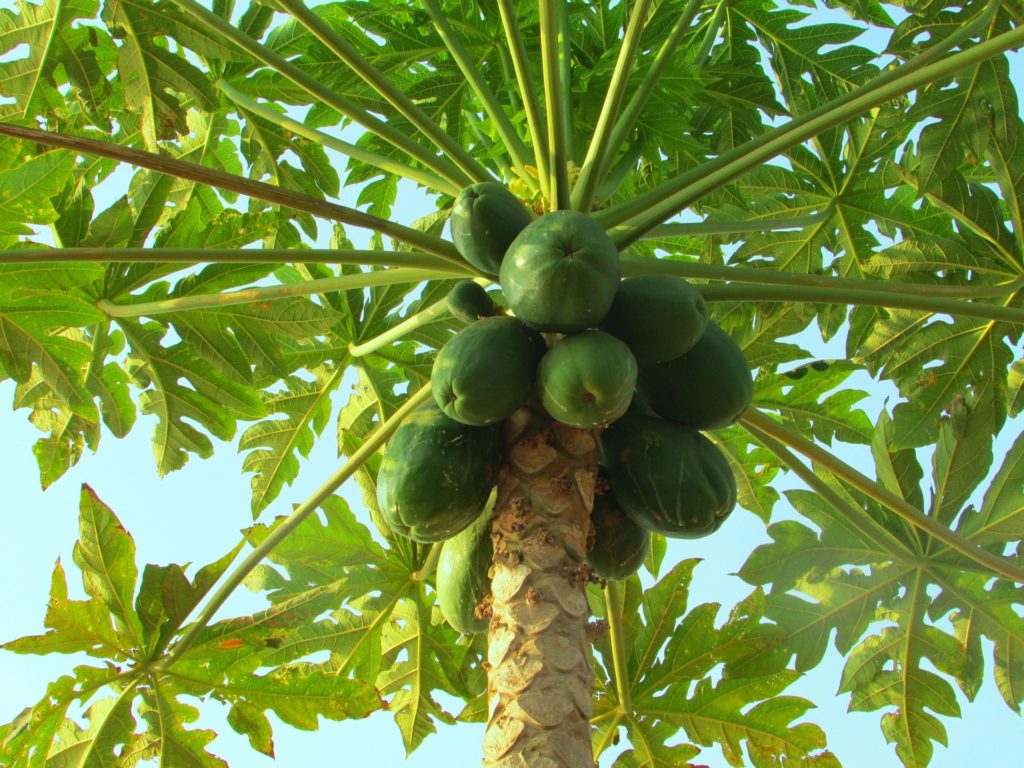
Papaya Tree
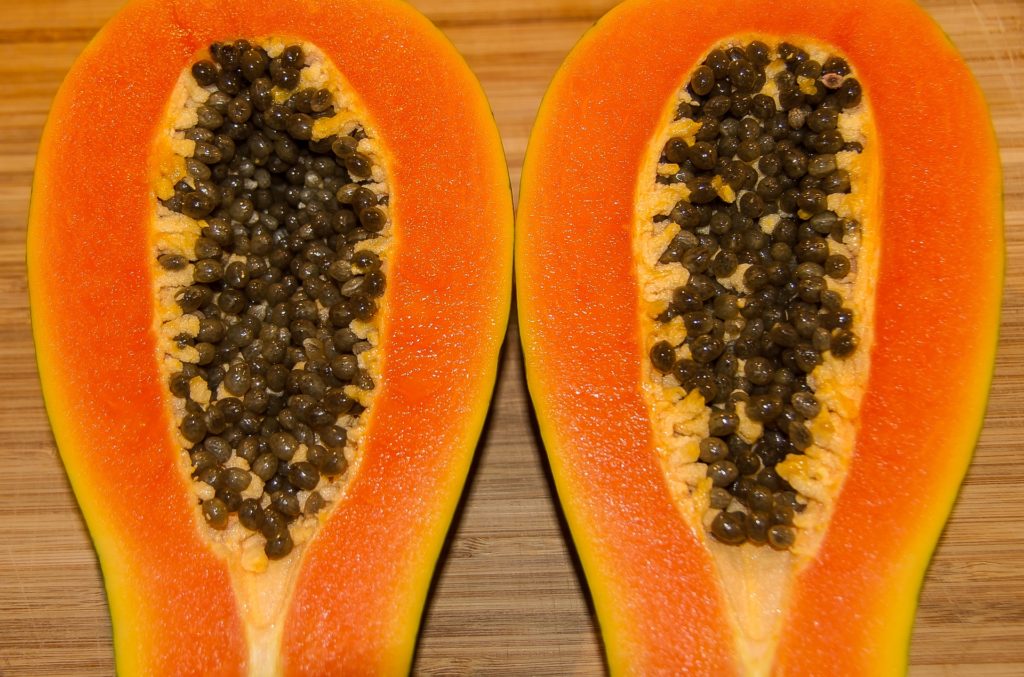
Papaya Fruit
There are so many types of banana available in Seychelles. From tiny bananas that fit in the palm of your hand, to the larger variety used a lot in cooking. We’ve got them all. As with the breadfruit mentioned above, bananas are also cooked in coconut milk to make ladob. Another popular dessert is ‘bannan flambe’, where the banana is cooked using rum usually, which triggers a sudden burst of flames. Bananas are also used to make cakes and fritters, jams, smoothies and so much more.
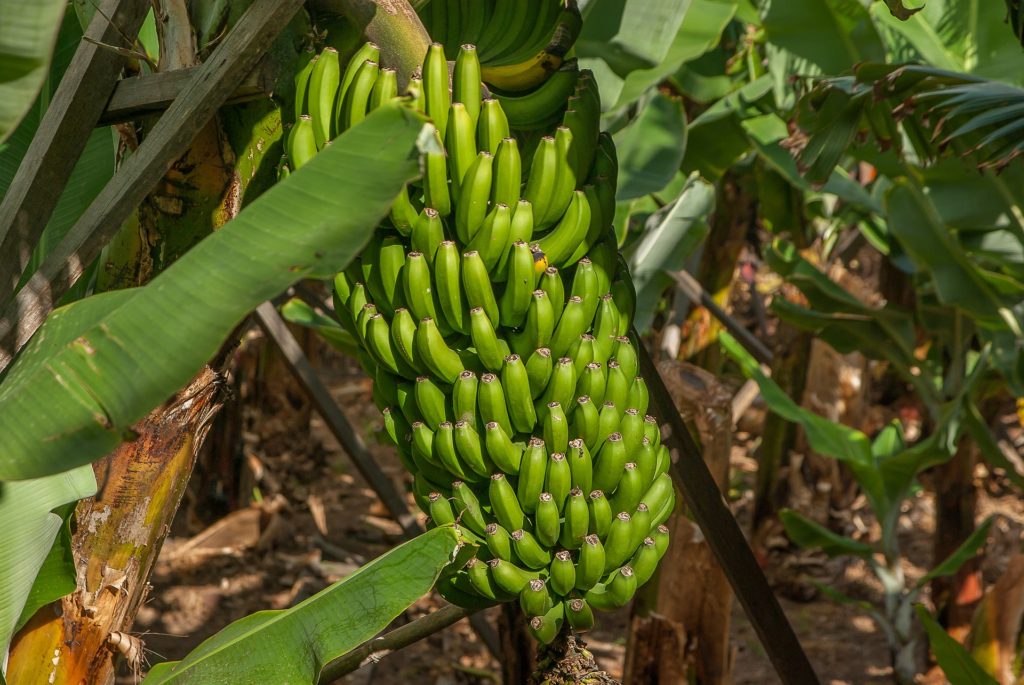
Bananas in Tree
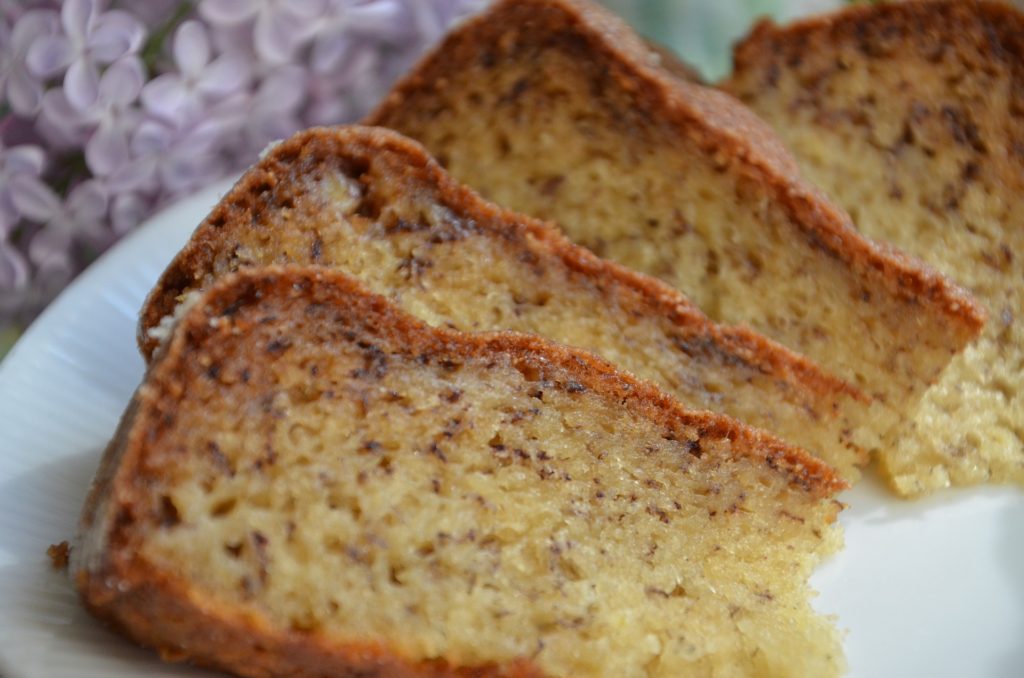
Banana Bread
These exotic fruits are close relatives to lychees. The skin is red and spiny and the flesh is soft and white with a single seed. This is eaten as is and can also be made into juices. The texture of the rambutan is much like that of a grape.
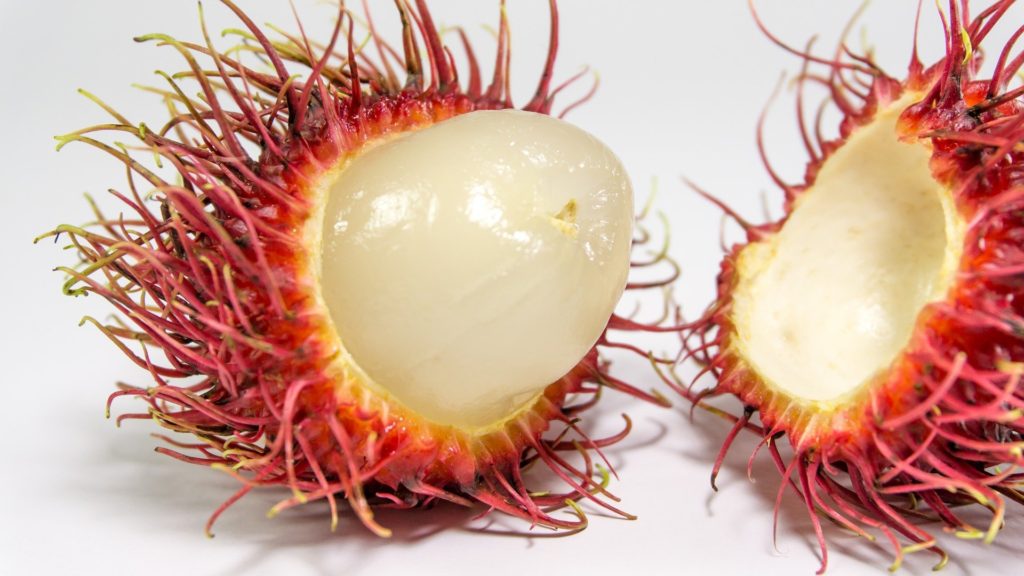
Rambutan
The Karanmbol has five ridges and when cut it has a distinctive star shape. The fruit may be used in salads as well as to make jams and juices. It is also used alongside other ingredients to make relishes. It’s very juicy and sweet, although you may find the odd sour one in a batch. Star fruit however may possibly be harmful to those suffering from kidney problems due to the caramboxin and oxalic acid it contains.
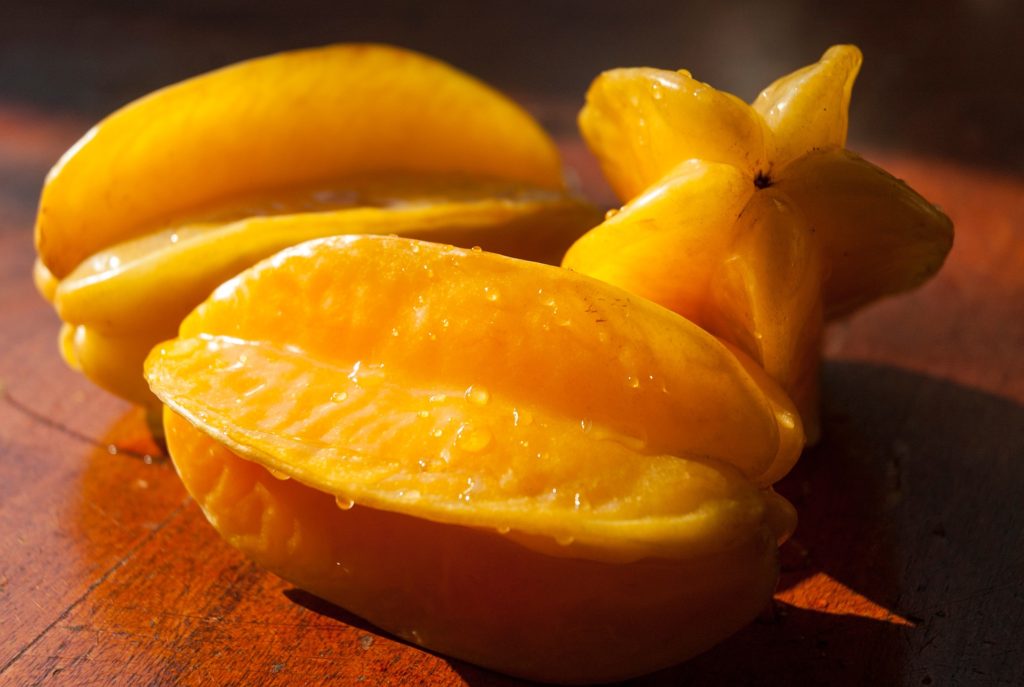
Starfruit
Who doesn’t want to be sipping a fresh passion fruit juice by the beach? This is probably the most iconic of exotic fruits and definitely one of the most popular types of juices enjoyed by locals and tourists alike. Most of the hotels and restaurants will always be able to offer fresh passion fruit juice. But apart from the juice itself, passion fruit is also used in many desserts like mousses and cakes.
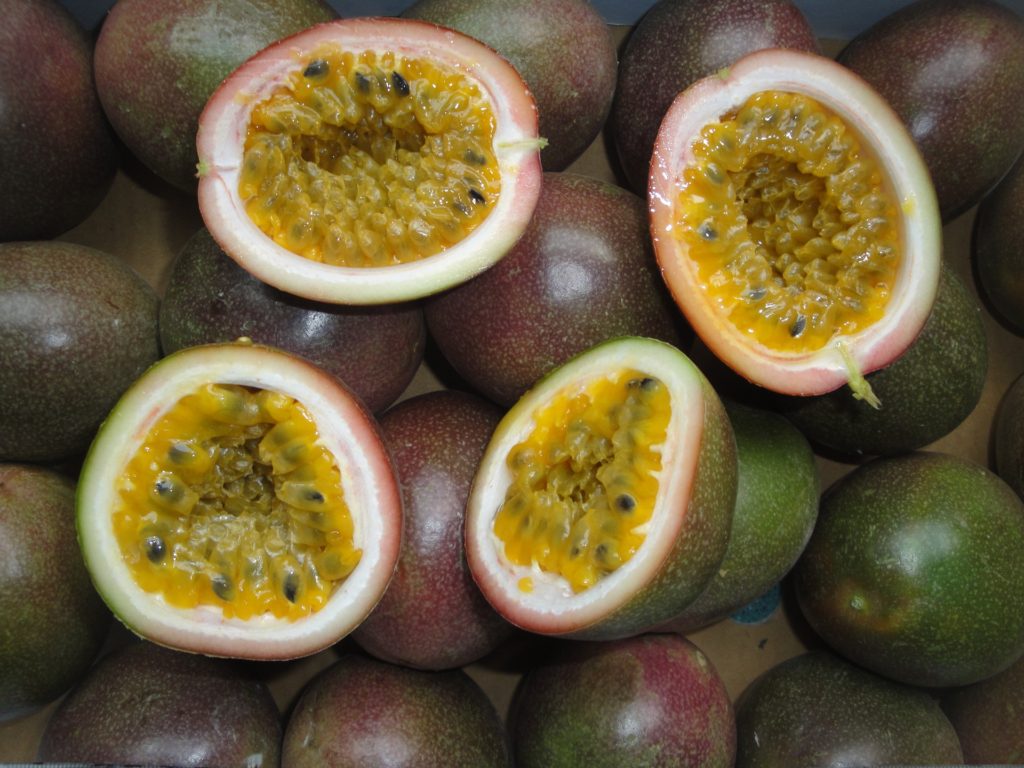
Passion Fruit
This large citrus fruit is related to the grapefruit and is widely used in salads as well as to make juice. It has a thick rind and its sweet, juicy flesh is separated into segments.
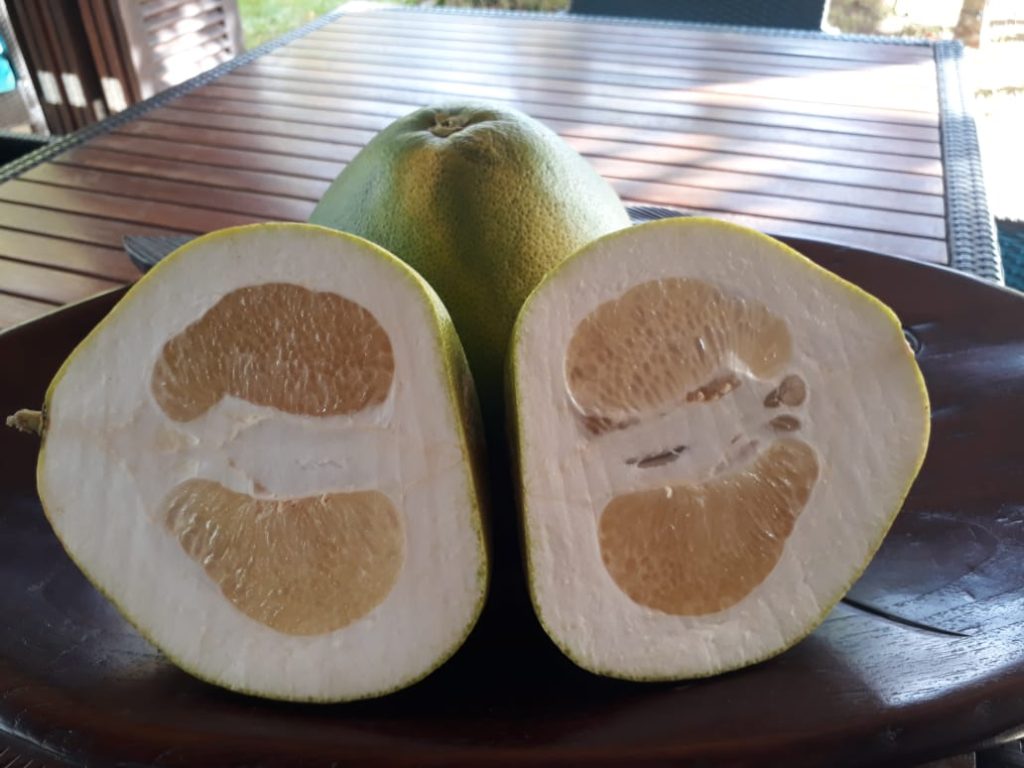
Pomelo (Pamplemousse)
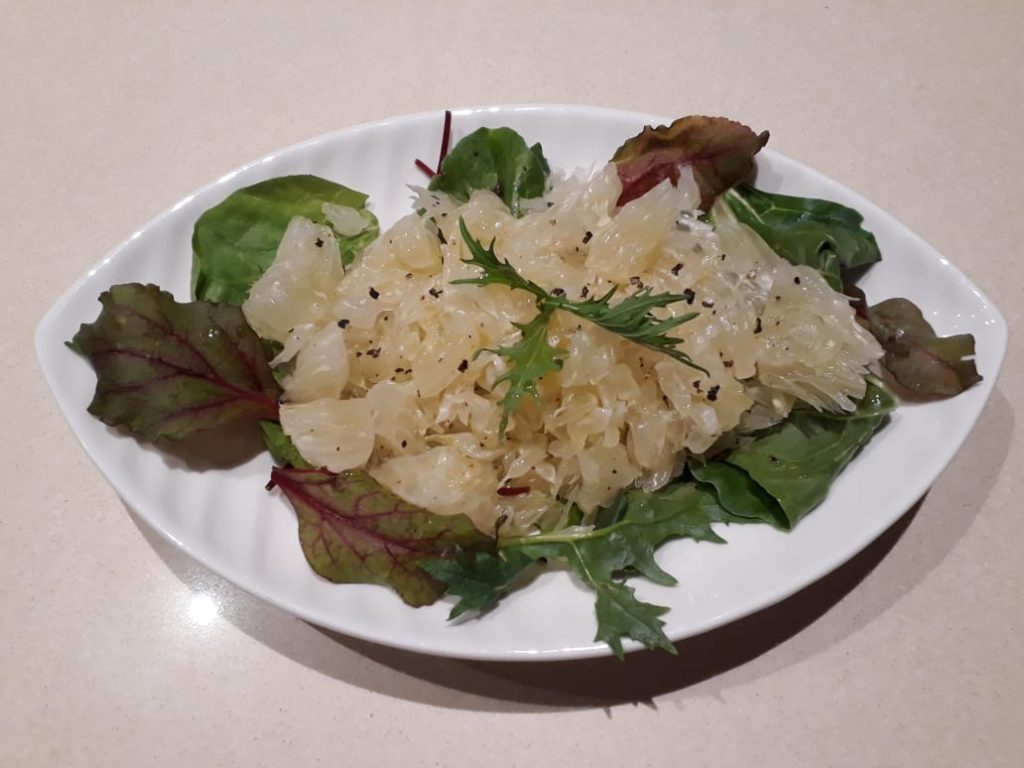
Pamplemousse Salad
Guava I think is one of those exotic fruits that you either like or you don’t. The smallish, round fruit has a rough, green and sometimes yellowish skin. The inside flesh is pink with a number of tiny seeds. But don’t worry, these are completely edible, as is the whole fruit in fact.
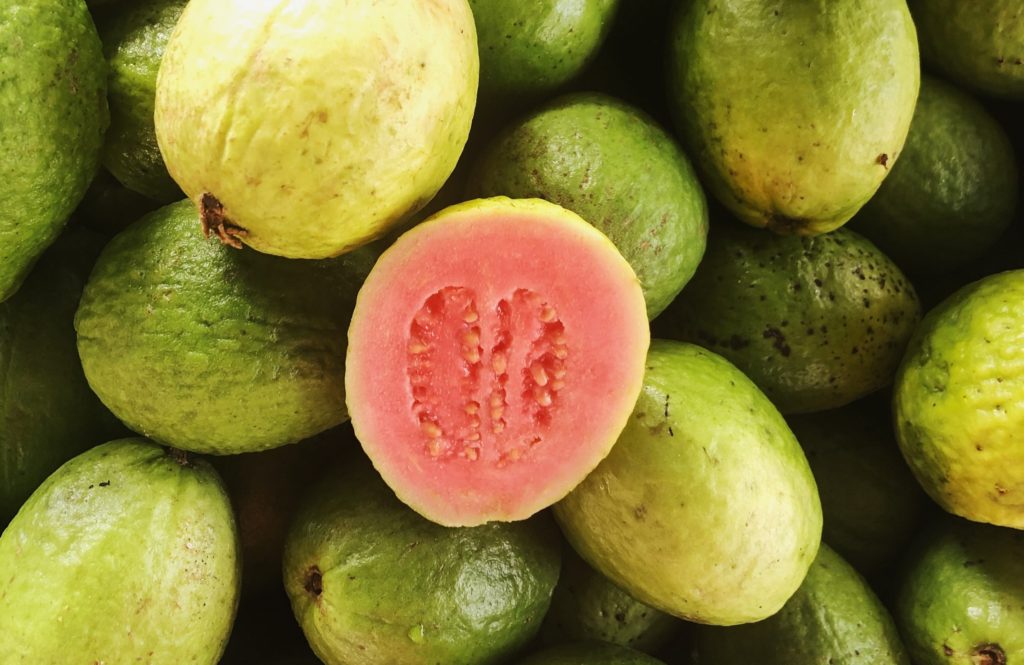
Guava
The santol fruit is similar in size to a peach with yellow, fuzzy skin. Once broken open, there is a soft, white flesh with inedible seeds. The texture of the flesh is dry and cottony, hence the name. It is not overly sweet, but nor is it too bitter. It might not be to everyone’s taste due to the texture, but worth a try all the same.
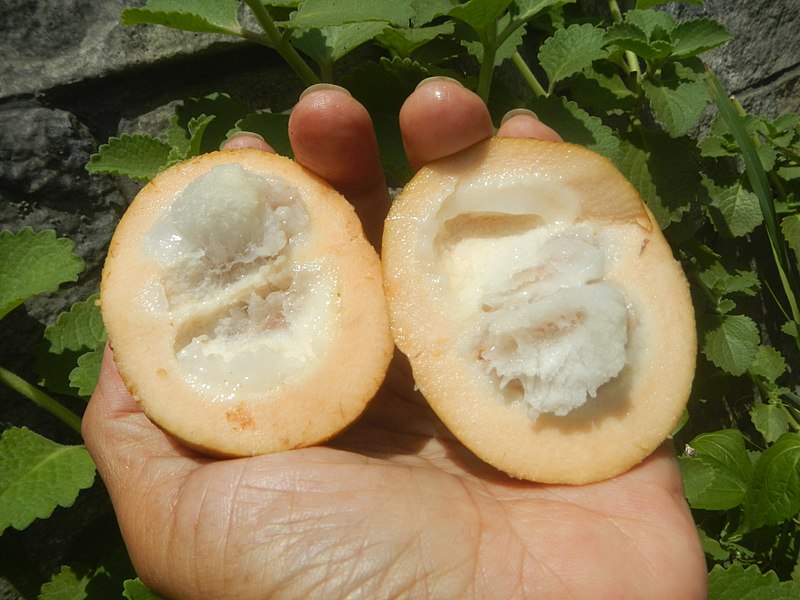
Cotton Fruit, Public Domain, Wikimedia Commons
This fruit is known by numerous names depending on where you’re from. It has a yellow, glossy skin and its flesh is like a thick, paste-like texture, similar to the yolk of a hardboiled egg. It can be eaten raw and can also be made into smoothies and jams.
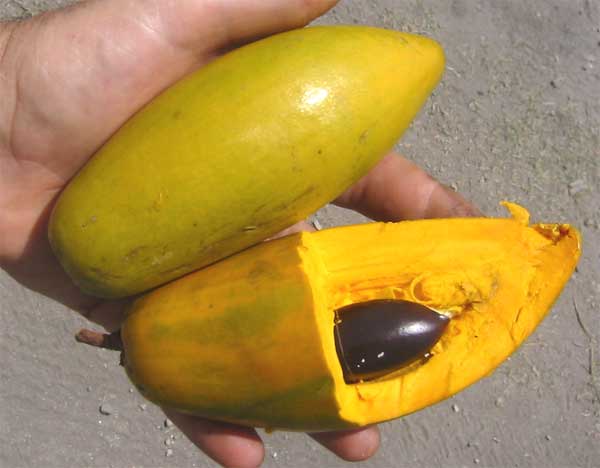
Sapote Fruit, Public Domain, Wikimedia Commons
The tamarind fruit grows in a pod with a hard brown shell. The fruit itself is fleshy with seeds. It has a sweet yet tangy taste that’s likely to make you wince, but once you get passed the initial sourness, it’s quite nice. Tamarind can be used in cooking and to make pastes and chutneys.

Tamarind Fruit
Mangosteens are sweet, purple exotic fruits. The skin is thick encasing a white, segmented flesh containing seeds. Although the flesh looks similar to the cotton fruit mentioned above, it does not have the same dry texture.
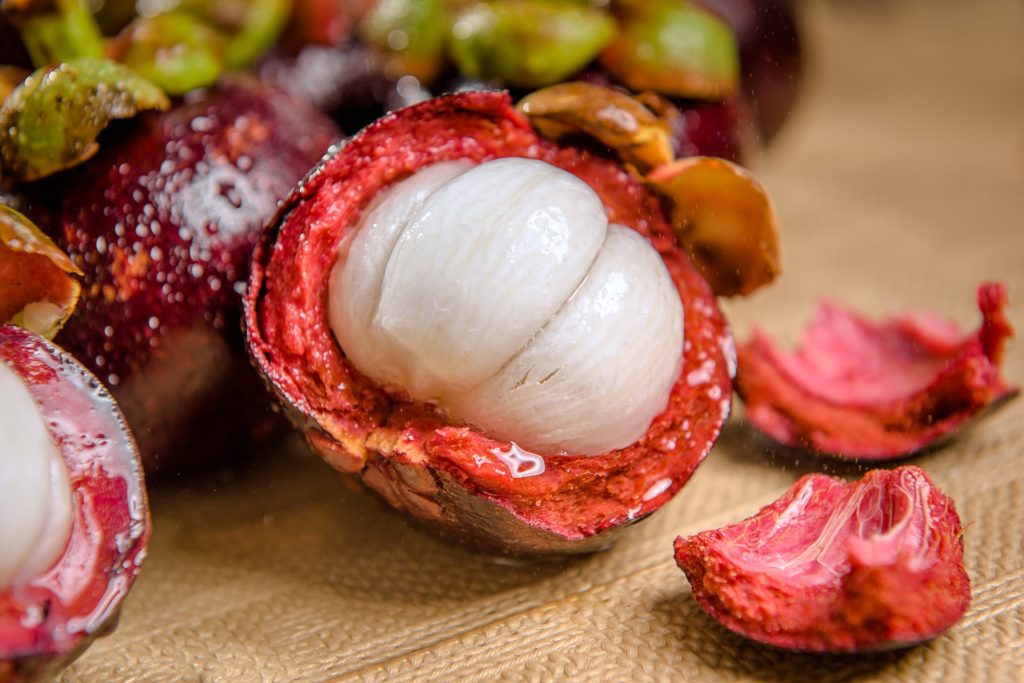
Mangosteen Fruit
The bitter orange, as its name suggests, is quite a bitter fruit. The most common use of bigarad is to make a refreshing lemonade.
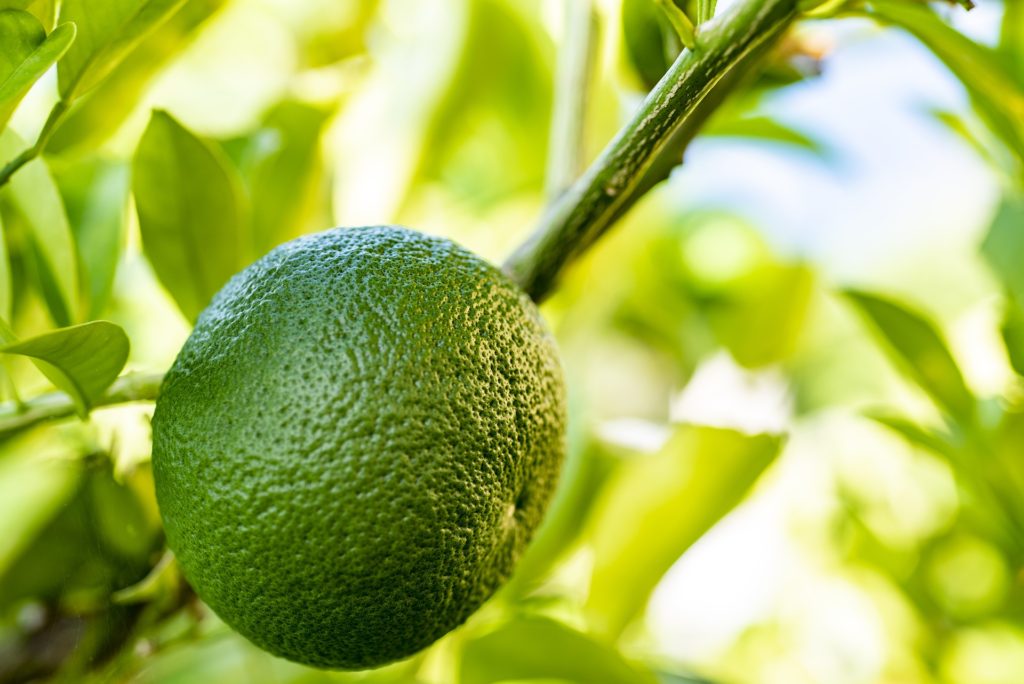
Bitter Orange
The types of exotic fruits that you’ll be able to sample will largely depend on the time of your visit. Some, such as coconuts, passion fruit, bananas and papaya, are available year round so there’s really no excuse not to try these. See below to find out more about when each of these fruits are in season.
Coconuts
Bananas
Passion Fruit
Papaya
Java Apple
Malay Apple
Coconuts
Bananas
Passion Fruit
Papaya
Java Apple
Malay Apple
Star Fruit
Rambutan
Breadfruit
Cotton Fruit
Coconuts
Bananas
Passion Fruit
Papaya
Star Fruit
Rambutan
Breadfruit
Mango
Guava
Golden Apple
Cotton Fruit
Pamplemousse
Bitter Orange
Coconuts
Bananas
Passion Fruit
Papaya
Rambutan
Mango
Guava
Breadfruit
Golden Apple
Pamplemousse
Bitter Orange
Coconuts
Bananas
Passion Fruit
Papaya
Mango
Breadfruit
Golden Apple
Coconuts
Bananas
Passion Fruit
Papaya
Star Fruit
Coconuts
Bananas
Passion Fruit
Papaya
Star Fruit
Coconuts
Bananas
Passion Fruit
Papaya
Golden Apple
Coconuts
Bananas
Passion Fruit
Papaya
Mango
Golden Apple
Coconuts
Bananas
Passion Fruit
Papaya
Jackfruit
Mango
Breadfruit
Coconuts
Bananas
Passion Fruit
Papaya
Jackfruit
Mango
Breadfruit
Coconuts
Bananas
Passion Fruit
Papaya
Java Apple
Malay Apple
Tamarind
We encourage you to try a few of these exotic fruits during your holiday in Seychelles, because although you may be able to buy some of these in your local supermarket, I promise the taste will not be the same.
You can also check out our Seychelles Cuisine page to learn more about the types of food in Seychelles.
| Cookie | Duration | Description |
|---|---|---|
| cookielawinfo-checkbox-analytics | 11 months | This cookie is set by GDPR Cookie Consent plugin. The cookie is used to store the user consent for the cookies in the category "Analytics". |
| cookielawinfo-checkbox-functional | 11 months | The cookie is set by GDPR cookie consent to record the user consent for the cookies in the category "Functional". |
| cookielawinfo-checkbox-necessary | 11 months | This cookie is set by GDPR Cookie Consent plugin. The cookies is used to store the user consent for the cookies in the category "Necessary". |
| cookielawinfo-checkbox-others | 11 months | This cookie is set by GDPR Cookie Consent plugin. The cookie is used to store the user consent for the cookies in the category "Other. |
| cookielawinfo-checkbox-performance | 11 months | This cookie is set by GDPR Cookie Consent plugin. The cookie is used to store the user consent for the cookies in the category "Performance". |
| viewed_cookie_policy | 11 months | The cookie is set by the GDPR Cookie Consent plugin and is used to store whether or not user has consented to the use of cookies. It does not store any personal data. |
Definitely want to try the sugar apple when I’m there! And actually, all the other fruits as well. They all look delicious! Thank you for sharing this!
The sugar apple is one of my favourites. So yummy!
These fruits look delicious! I’d like to try the ones I haven’t tried before – especially in Seychelles 🙂
Thank you.
These sound so interesting! I’ve tried coconut, mangoes, papayas, guava and star fruit but now I have a list of more I want to try. Thanks for sharing! This is a great list! 🙂
There are so many more that are not on the list! The ones here are more popular and definitely worth a try.
Wow amazing collection, love tropical fruits. I can almost
feel how delightful they are..
Thank you. They definitely make your mouth water….😊